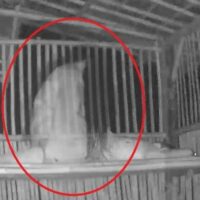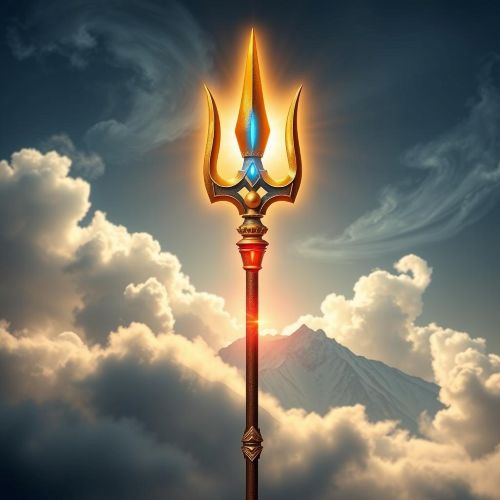Kuntilanak :The Vengeful Beauty
Listen
At a glance
| Description | |
|---|---|
| Origin | Indonesian Mythology |
| Classification | Gods |
| Family Members | N/A |
| Region | Indonesia |
| Associated With | Death, Vengeance, Shapeshifting |
Kuntiliak
Introduction
The Kuntilanak is a central figure in Indonesian folklore, often depicted as the spirit of a woman who died during childbirth. This ghostly entity serves as both a cautionary tale and a cultural symbol, warning against mistreatment of women and neglect of familial duties. Her legend carries moral lessons that resonate deeply in Indonesian society.
This haunting figure has inspired countless representations in literature, film, and art, cementing her place in cultural memory. Rooted in the folklore of the Malay Archipelago, the Kuntilanak has captured imaginations for generations with her eerie presence and malevolent aura, making her one of the most infamous supernatural beings in Indonesian mythology.
Physical Traits
The Kuntilanak is commonly portrayed as a spectral woman dressed in a flowing white gown, her ghostly aura heightened by long, unkempt hair that obscures her face. Her beauty is striking yet deceptive, capable of transforming into something terrifying in an instant. With pale, translucent skin and glowing red eyes, her presence exudes an unsettling menace.
Legends often describe her sharp nails and an eerie voice that alternates between sweet singing and bone-chilling screams, reflecting the tragedy of her untimely death. Adding to her spectral mystique, she is said to lack feet, floating silently and instilling fear in those who encounter her.
Family
The Kuntilanak’s origins are rooted in the sorrow of maternal loss, often portrayed as a spirit of a woman who died during childbirth. This tragic backstory intertwines themes of grief, motherhood, and vengeance, making her both a terrifying and deeply poignant figure. Her connection to family is central, as she is sometimes seen as a protector of women and a symbol of justice for those wronged within domestic relationships.
In many versions of the legend, her unfulfilled longing for her child drives her to seek out pregnant women or young children, embodying a complex duality of nurturing instincts and vengeful motives. Her ties to familial tragedy highlight enduring bonds that persist even in death, adding a layer of humanity to her spectral presence.
Other names
The Kuntilanak is known by various names across Indonesia and Southeast Asia, reflecting her widespread presence in regional folklore. In Malaysia, she is commonly referred to as “Pontianak” a term derived from the Malay phrase Perempuan Mati Beranak (“woman who died in childbirth”). This name often highlights her vengeful nature.
In some Malay traditions, she is also called “Langsuir” a variation that emphasizes her vampiric and more monstrous traits. On the island of Java, she is sometimes linked to the figure of “Sundel Bolong” a ghostly woman distinguished by a hollow cavity in her back. In modern adaptations, she has been referred to as “Bunda Cinta” a title that reimagines her as a maternal figure.
These variations in names and traits reflect how the Kuntilanak myth adapts to different cultural contexts while preserving her essence as a symbol of tragedy and vengeance.
Powers and Abilities
The Kuntilanak is imbued with a range of supernatural abilities that underscore her fearsome reputation in folklore. One of her most chilling traits is her capacity to curse individuals, bringing misfortune or illness to those who offend her or violate moral boundaries. Her transformative powers allow her to shift appearances, often taking the guise of a beautiful woman to deceive and ensnare her victims.
In addition to her shape-shifting, she wields immense supernatural strength, capable of physical dominance or inducing paralyzing psychological fear. Her telepathic abilities enable her to manipulate thoughts, instill terror, or compel harmful actions in her prey. Legends also attribute to her the power to control natural elements, summoning storms or heavy rain as harbingers of her presence.
These formidable abilities are not only central to her myth but also serve as warnings against moral lapses and societal neglect, reinforcing her role as both a cautionary figure and an agent of retribution.
Modern Day Influence
The Kuntilanak has evolved from a figure of folklore into a prominent icon in modern media, particularly in horror films, literature, and pop culture. Indonesian cinema has reimagined her story multiple times, with films like Kuntilanak (2006) and its sequels blending her traditional myth with contemporary narratives, often exploring themes of tragedy and vengeance.
In literature, her character has been woven into novels and graphic stories that tackle societal issues such as gender dynamics and domestic violence, making her a vehicle for both entertainment and cultural critique. Beyond storytelling, the Kuntilanak’s eerie image has been embraced in video games, comics, and art, reflecting her relevance in a variety of creative platforms.
Her enduring presence in pop culture resonates deeply with themes of motherhood, loss, and societal neglect, offering nuanced commentary on family and women’s rights. As a symbol of both fear and fascination, the Kuntilanak demonstrates the ability of myths to adapt and remain significant, bridging traditional beliefs with modern cultural discourse.
Related Images
Source
“Kuntilanak: The Ghostly Woman in White.” Accessed January 6, 2025.
“Kuntilanak – The Ghost of Indonesian Folklore.” Accessed January 6, 2025.
“The Legend of Kuntilanak.” Accessed January 6, 2025.
Jan Harold Brunvand, The Encyclopedia of Urban Legends, W. W. Norton & Company, 2001.
“The Kuntilanak Image in Mangkujiwo Movie: Roland Barthes Semiotics Analysis.” (2022).
Frequently Asked Questions
What is lorem Ipsum?
I am text block. Click edit button to change this text. Lorem ipsum dolor sit amet, consectetur adipiscing elit. Ut elit tellus, luctus nec ullamcorper mattis, pulvinar dapibus leo.
What is lorem Ipsum?
I am text block. Click edit button to change this text. Lorem ipsum dolor sit amet, consectetur adipiscing elit. Ut elit tellus, luctus nec ullamcorper mattis, pulvinar dapibus leo.
What is lorem Ipsum?
I am text block. Click edit button to change this text. Lorem ipsum dolor sit amet, consectetur adipiscing elit. Ut elit tellus, luctus nec ullamcorper mattis, pulvinar dapibus leo.
What is lorem Ipsum?
I am text block. Click edit button to change this text. Lorem ipsum dolor sit amet, consectetur adipiscing elit. Ut elit tellus, luctus nec ullamcorper mattis, pulvinar dapibus leo.
What is lorem Ipsum?
I am text block. Click edit button to change this text. Lorem ipsum dolor sit amet, consectetur adipiscing elit. Ut elit tellus, luctus nec ullamcorper mattis, pulvinar dapibus leo.












